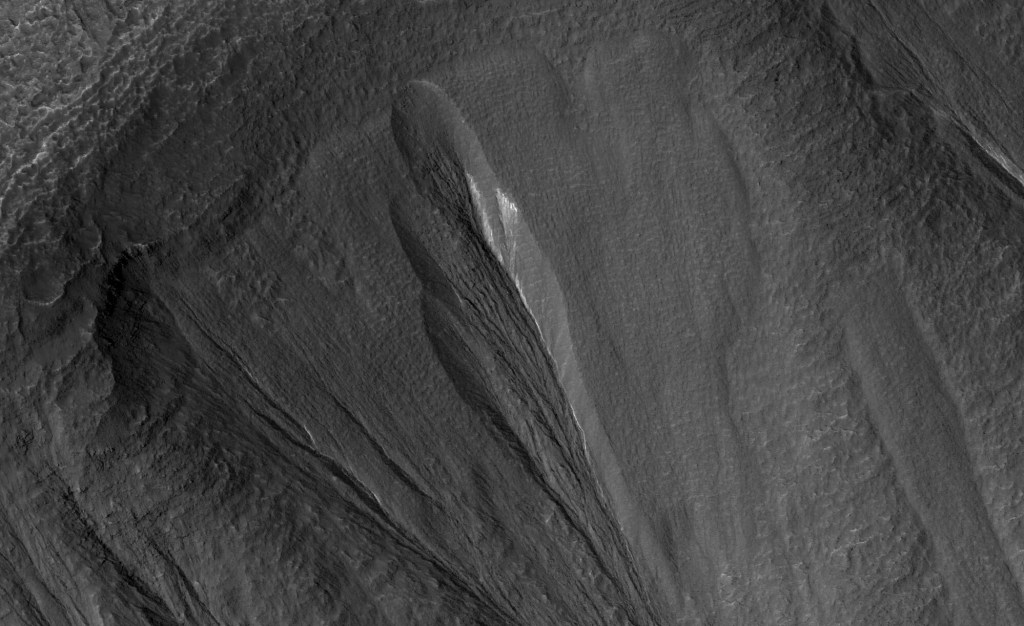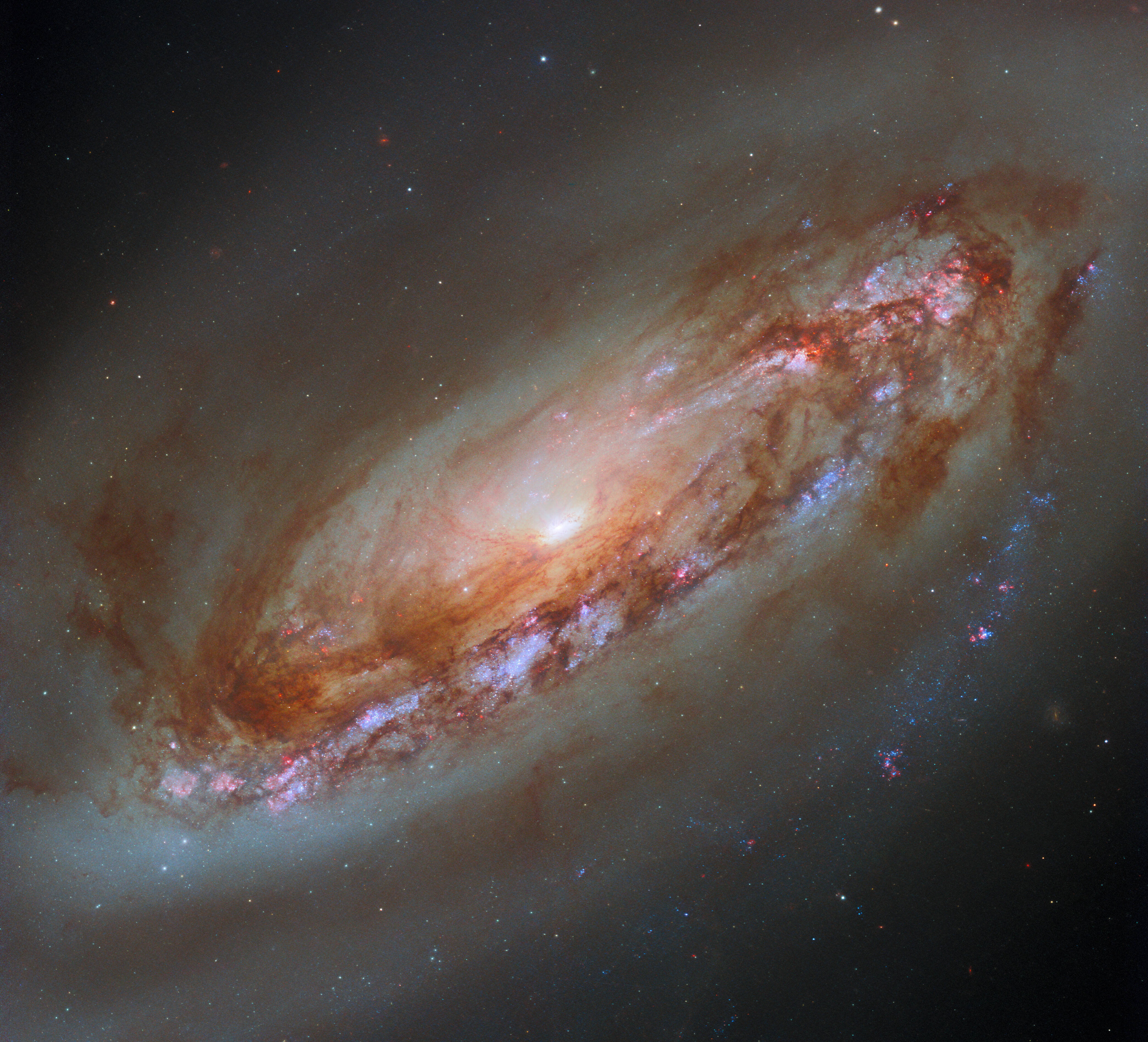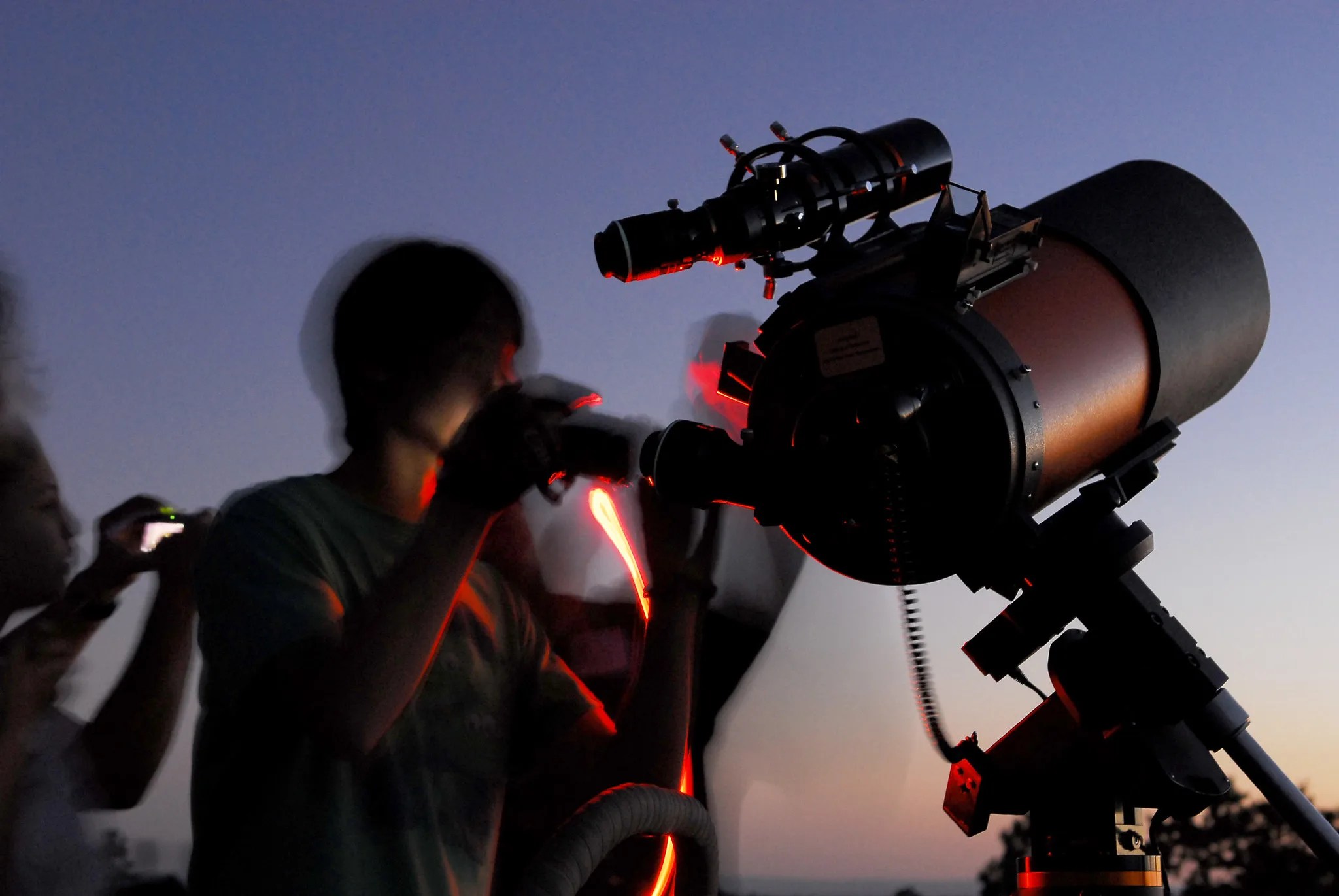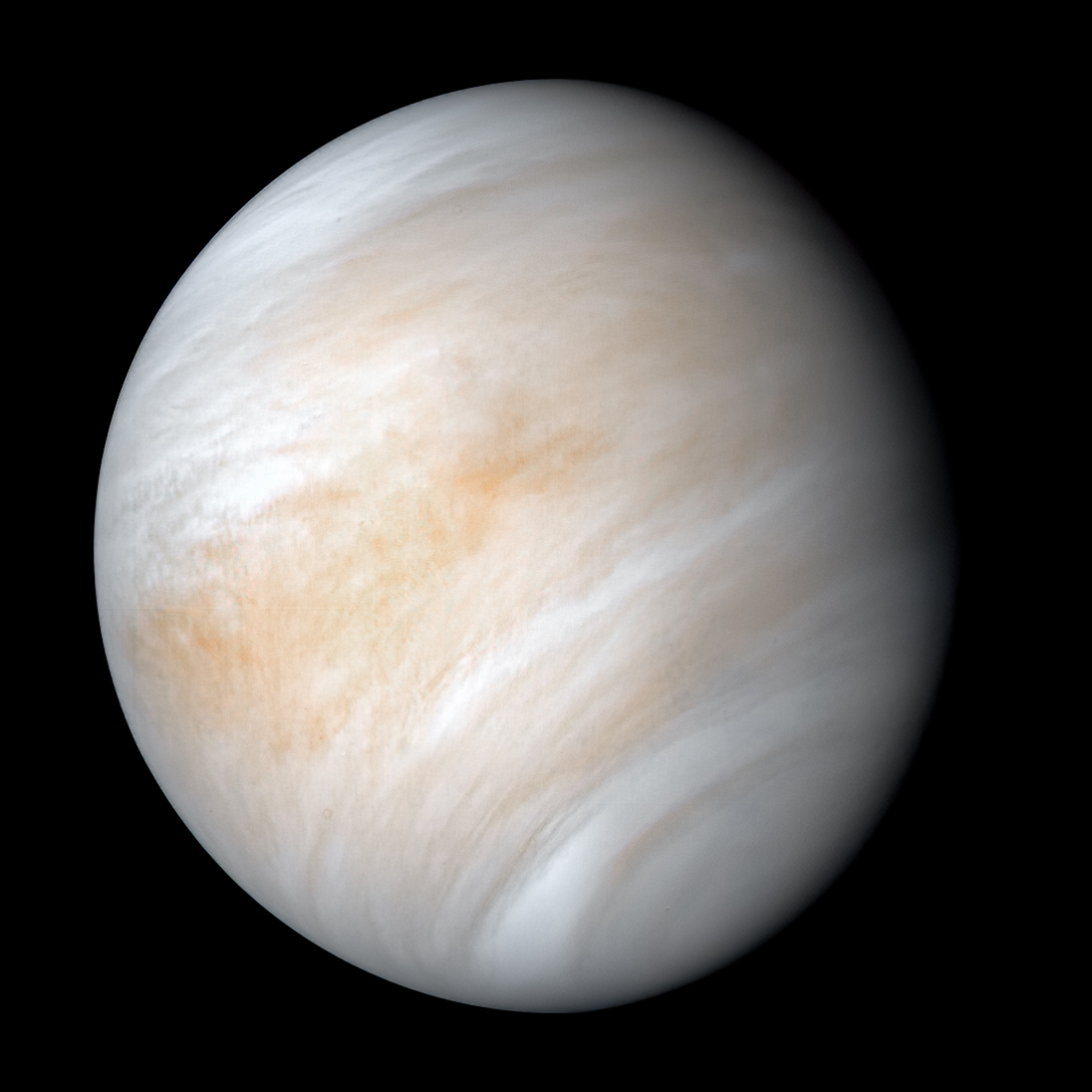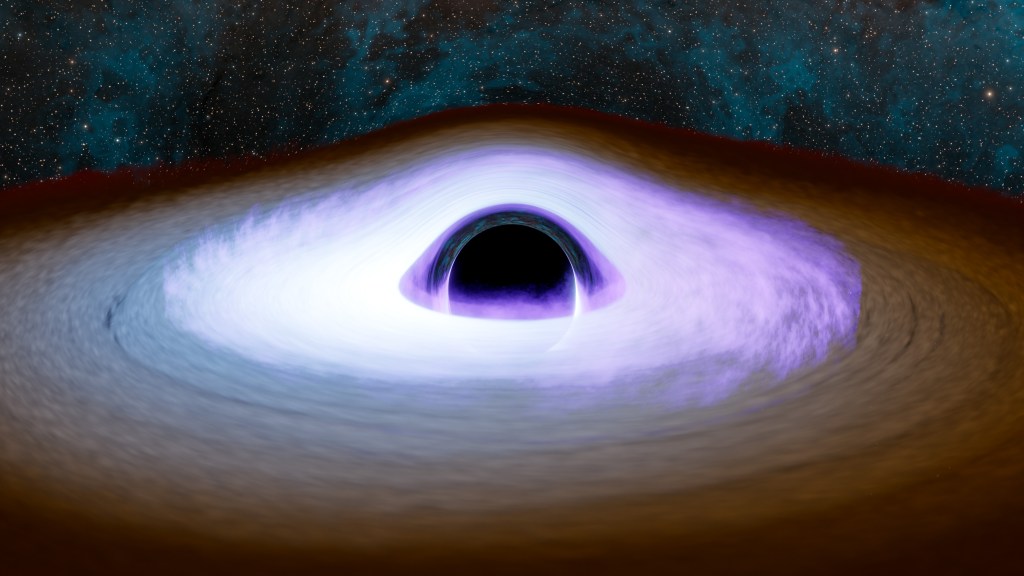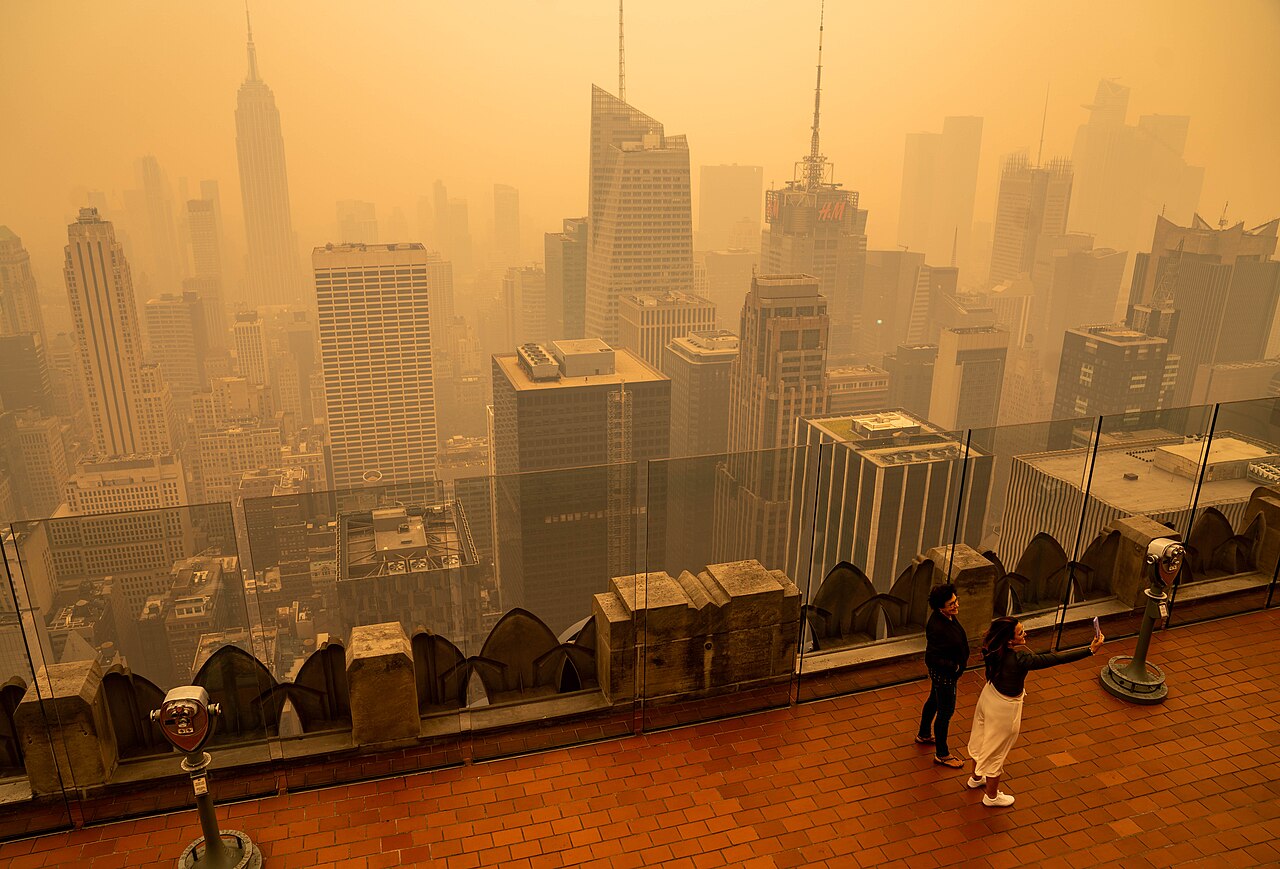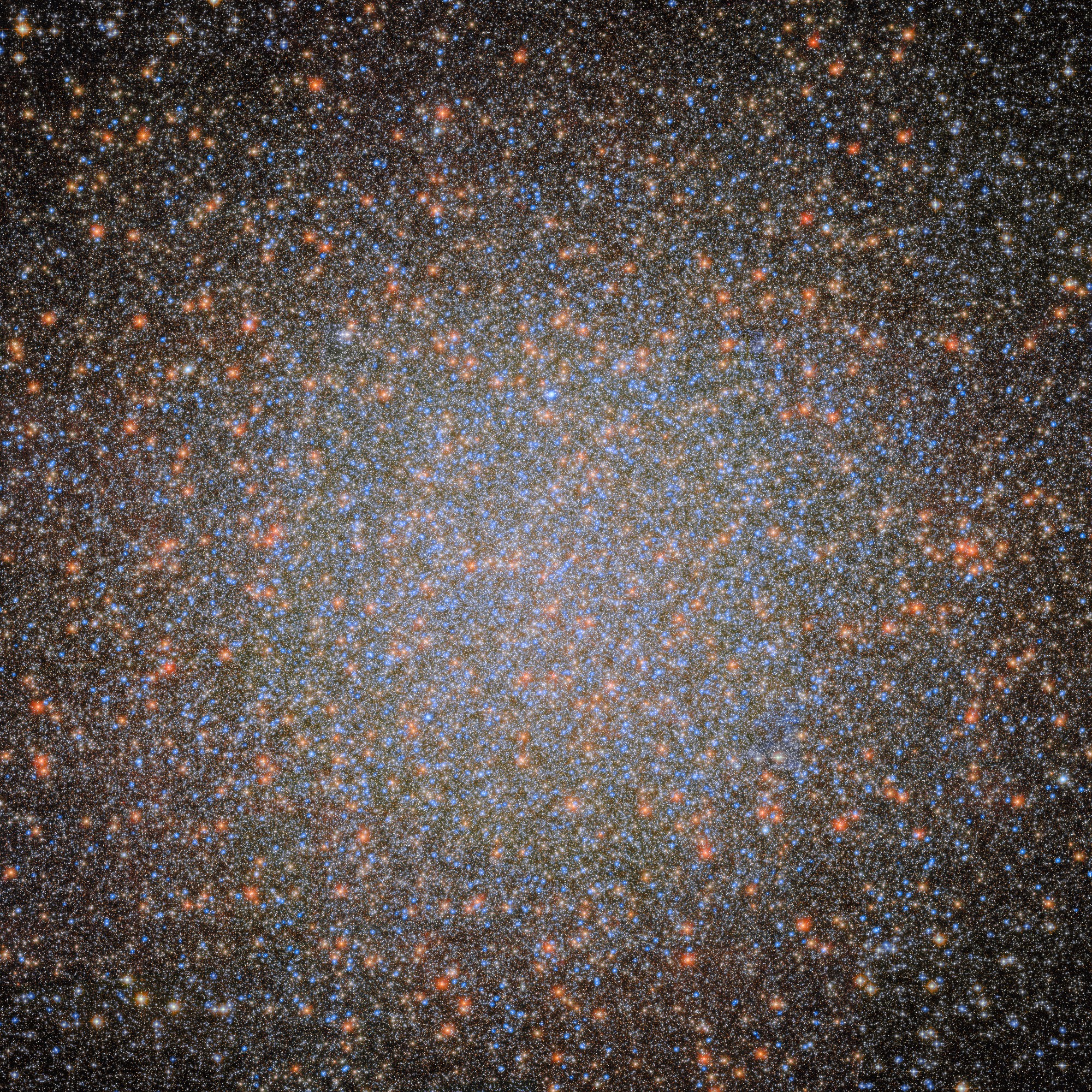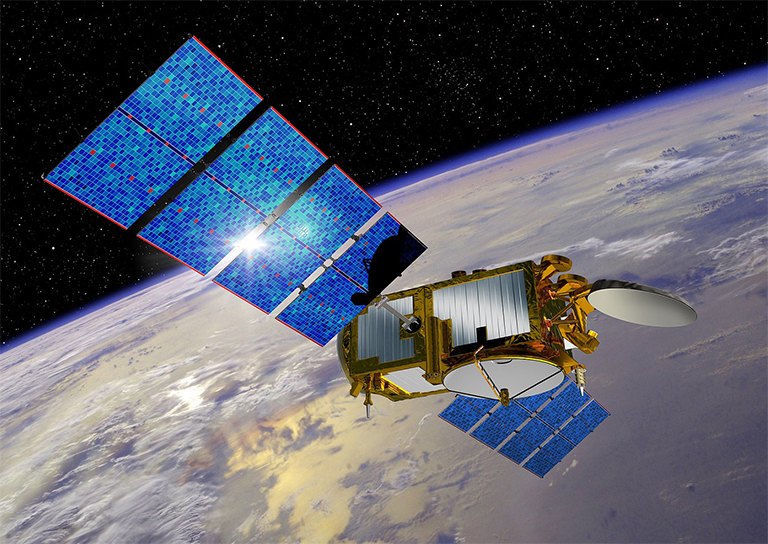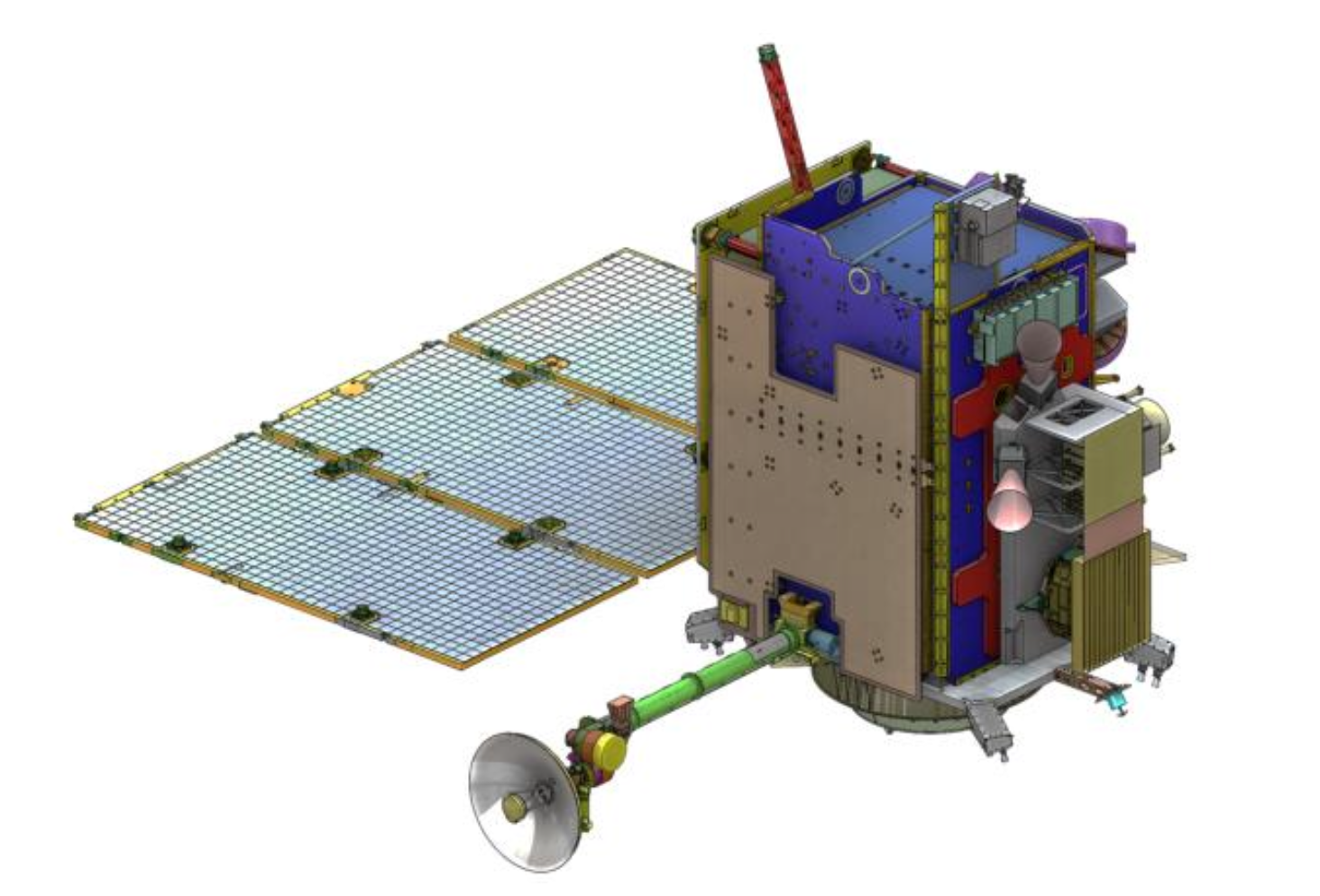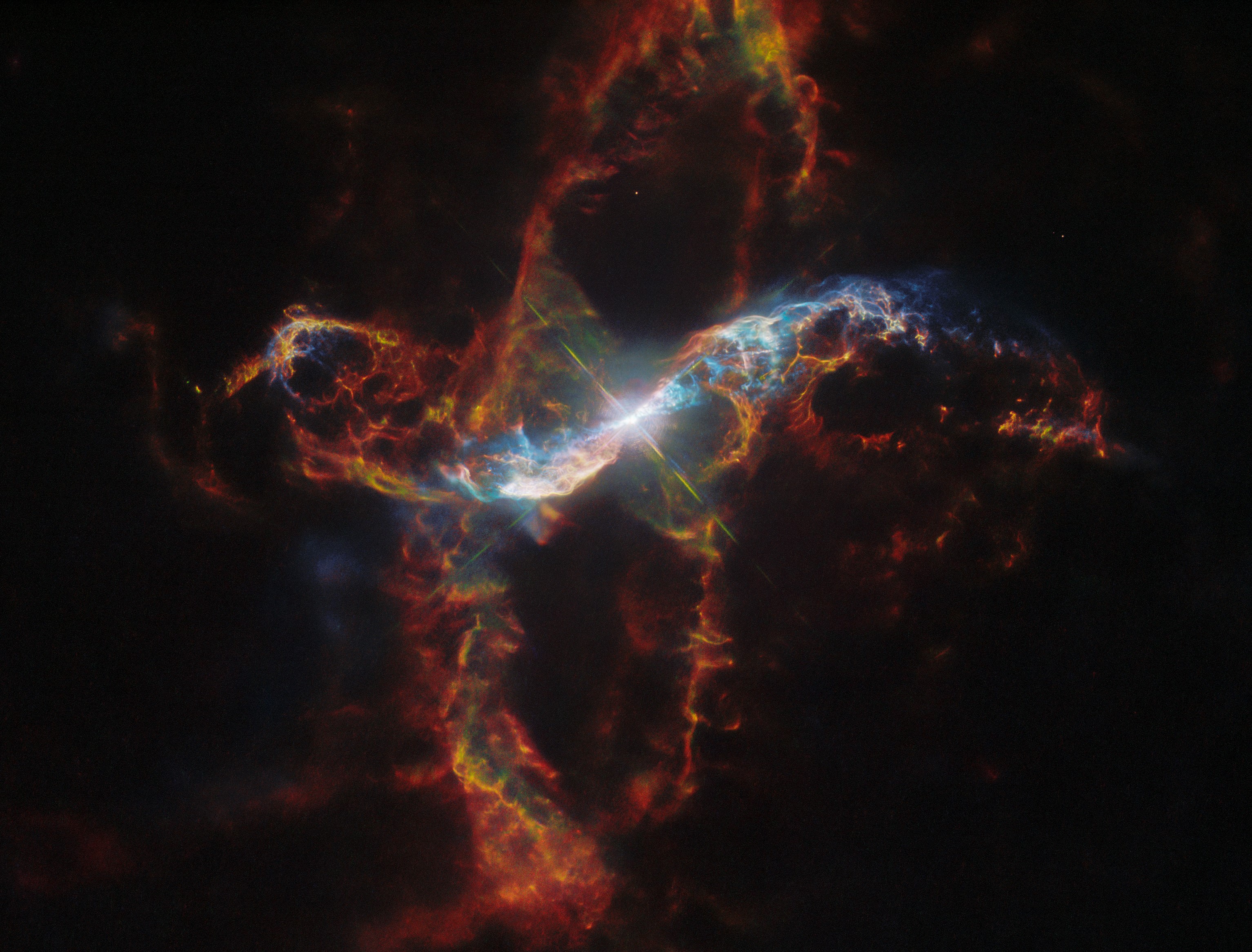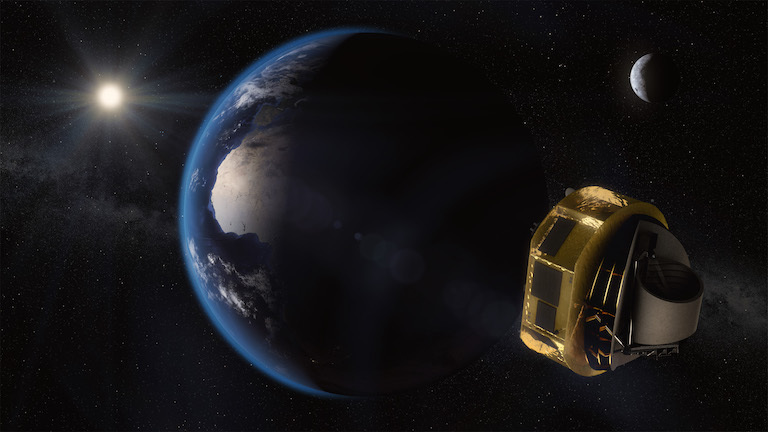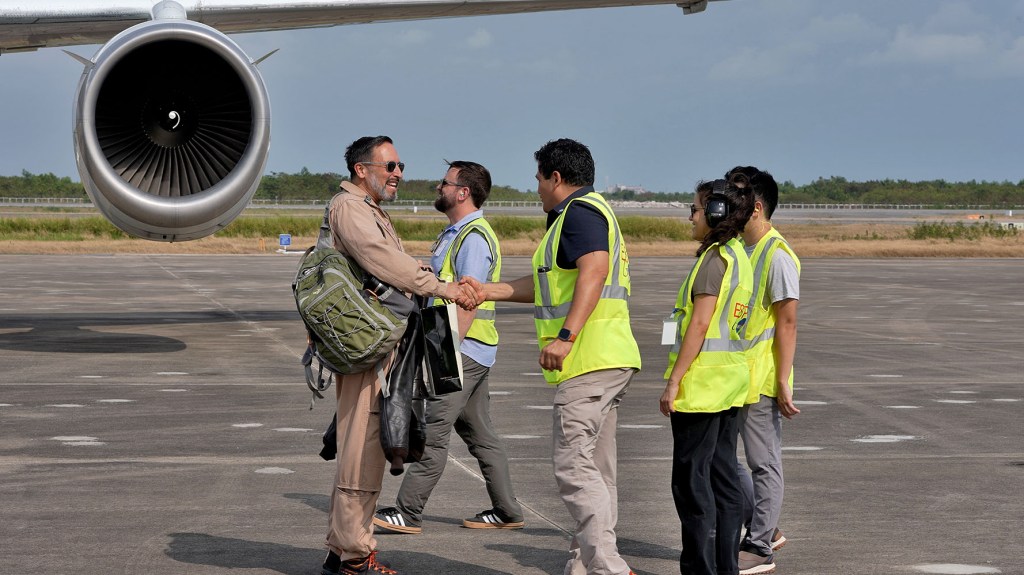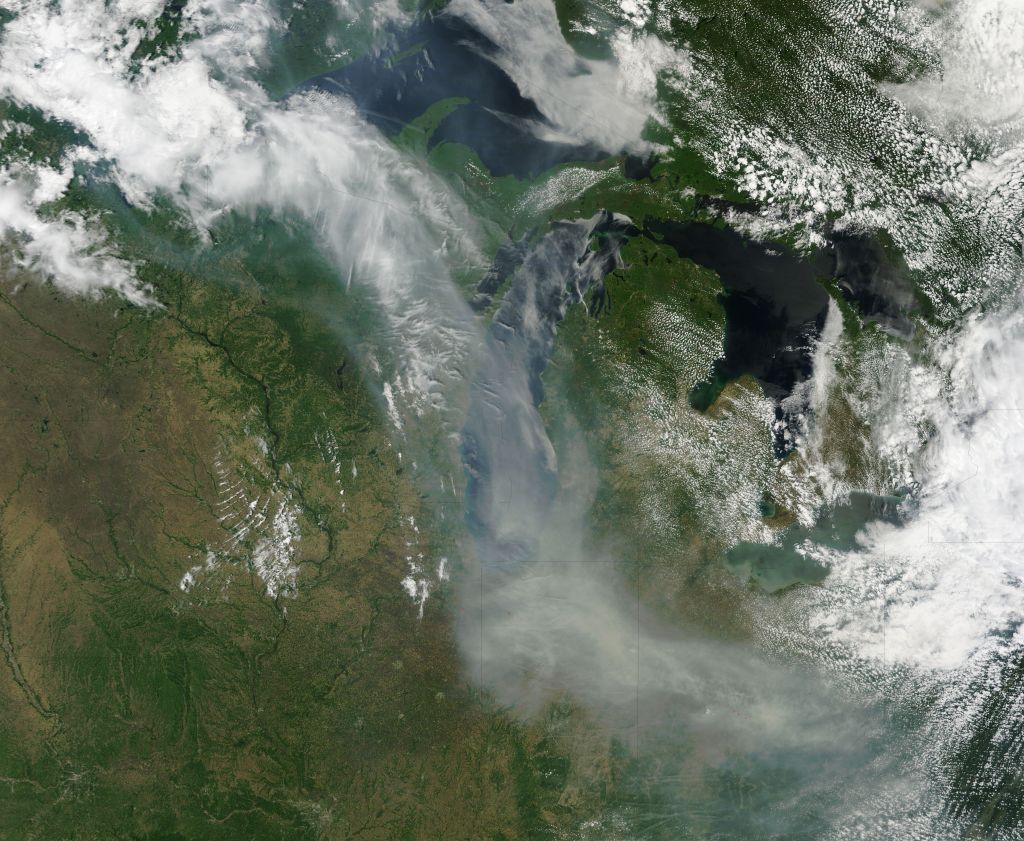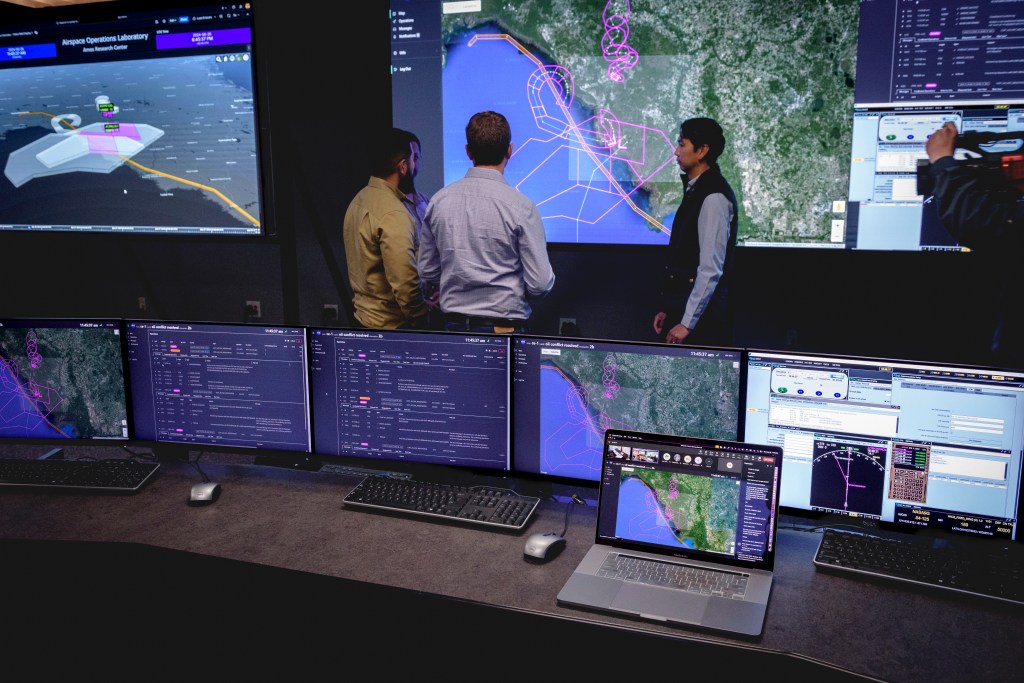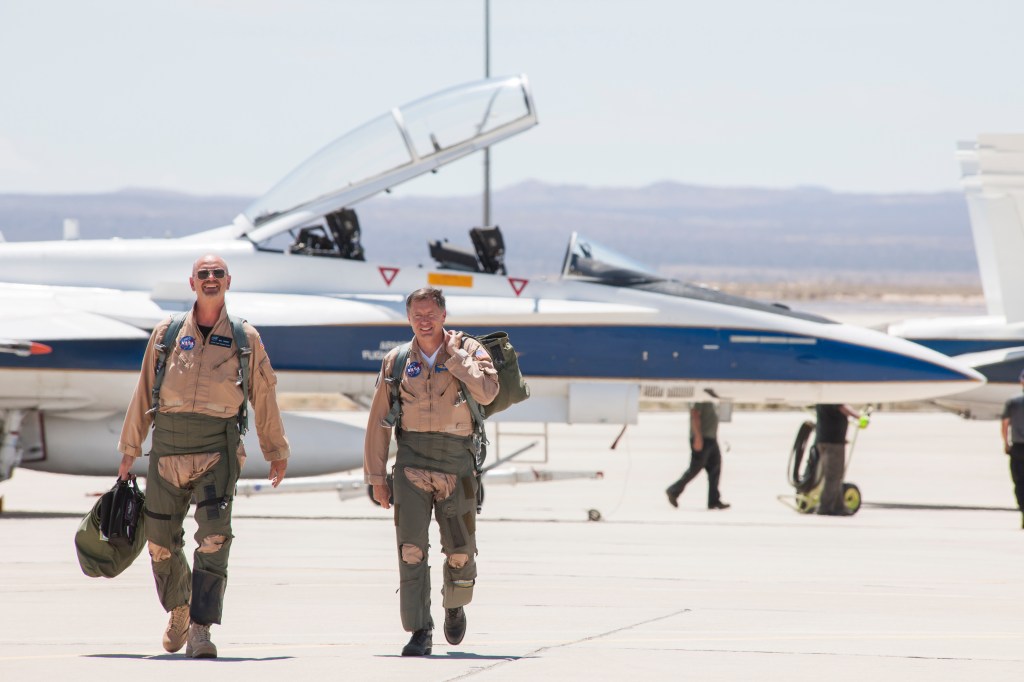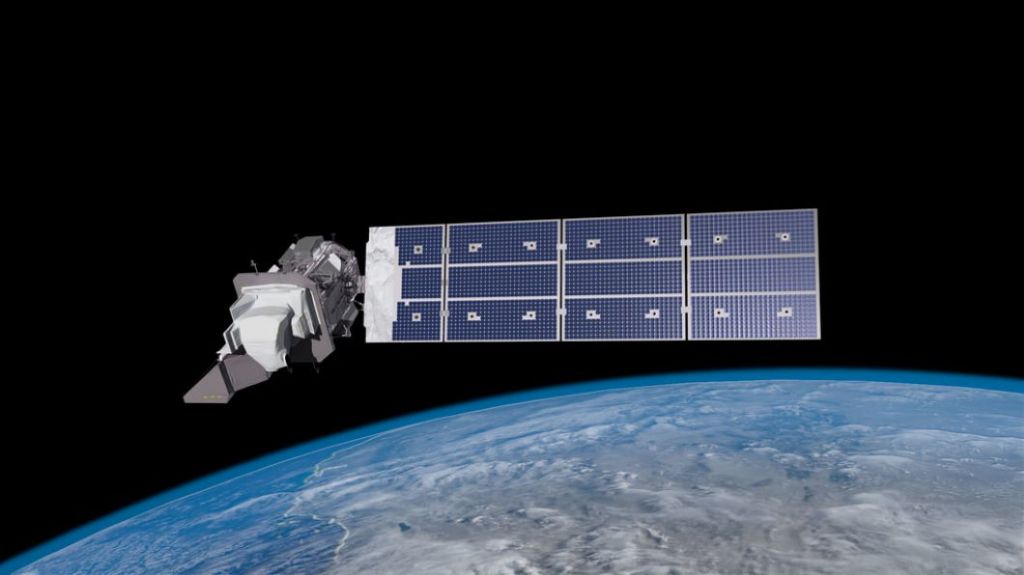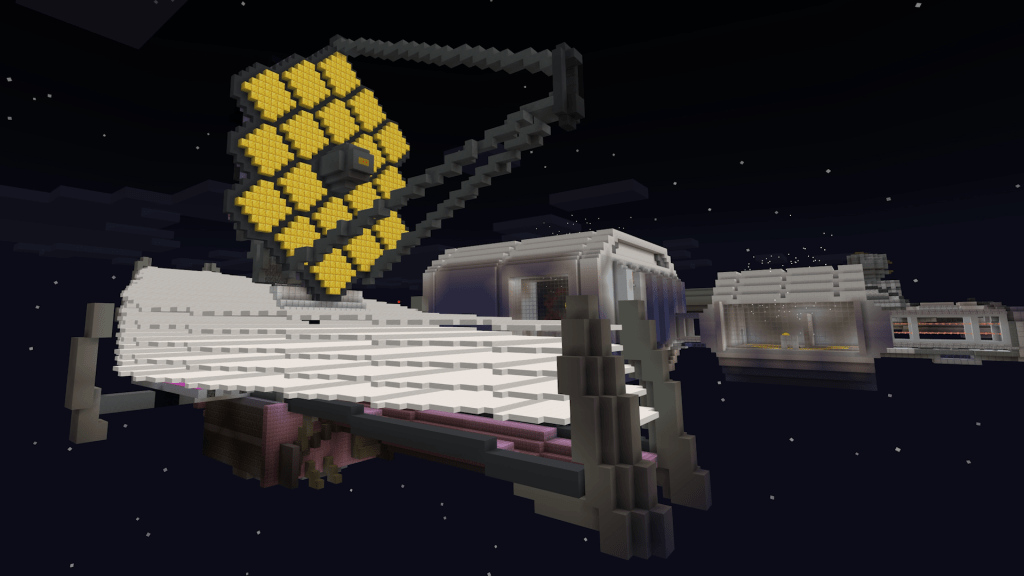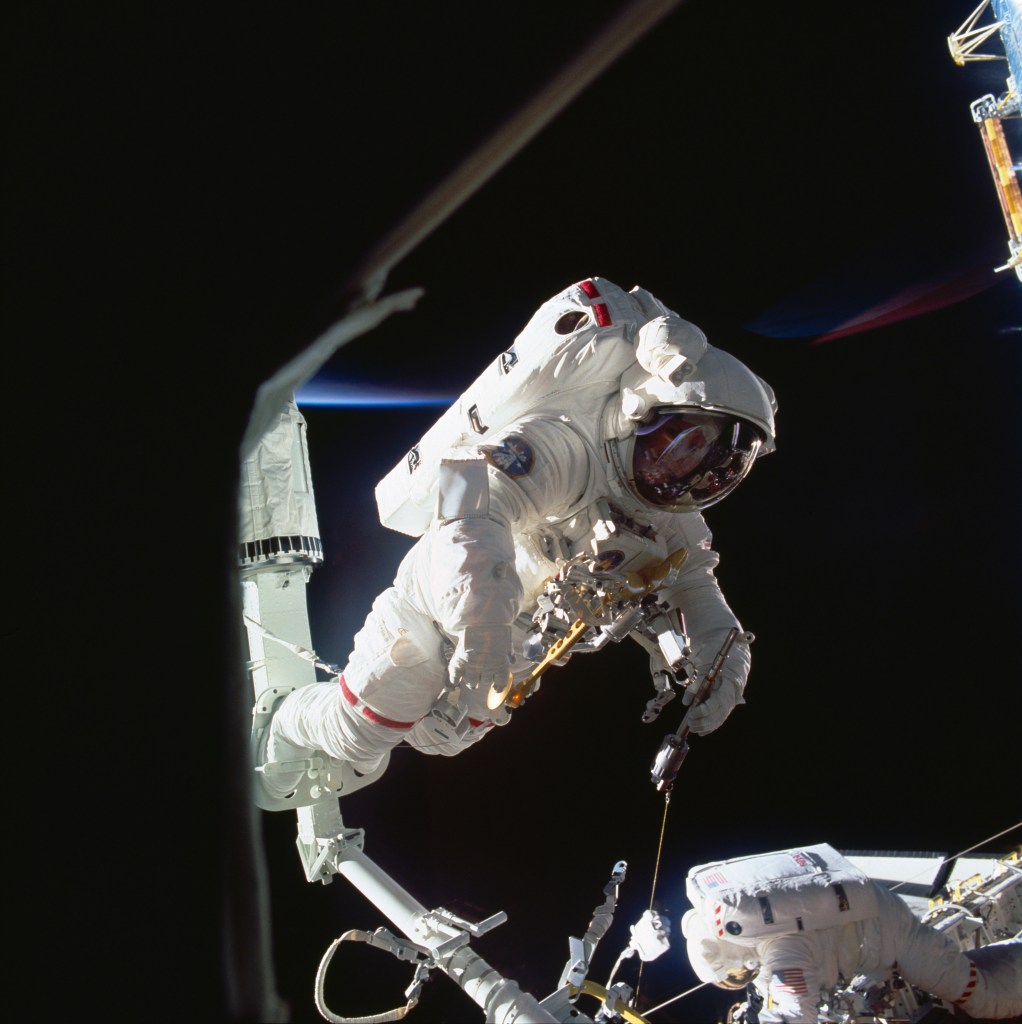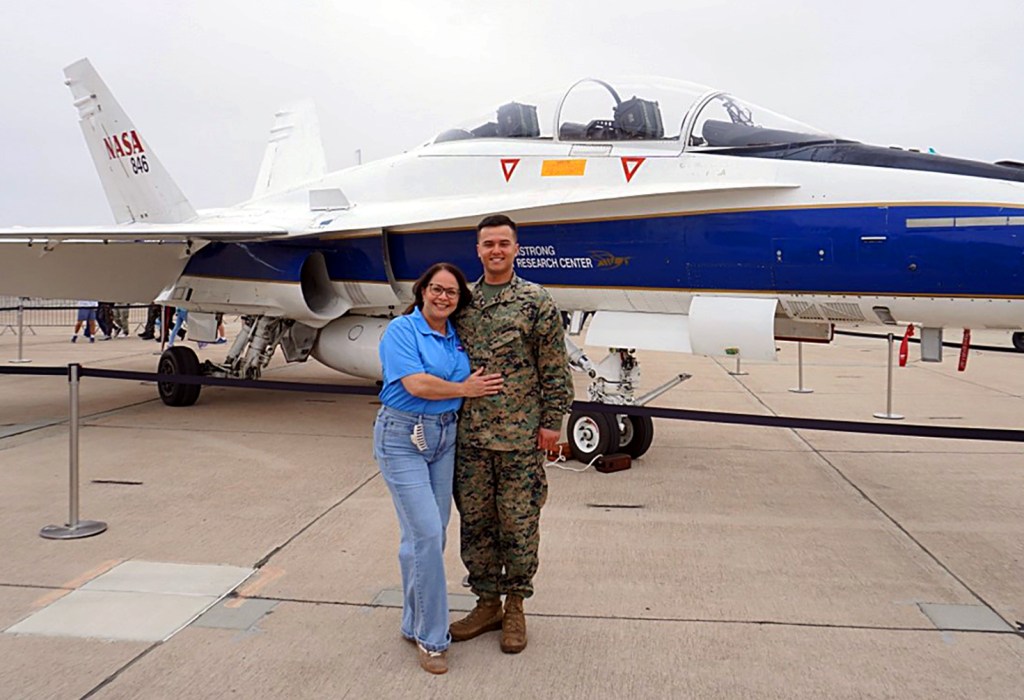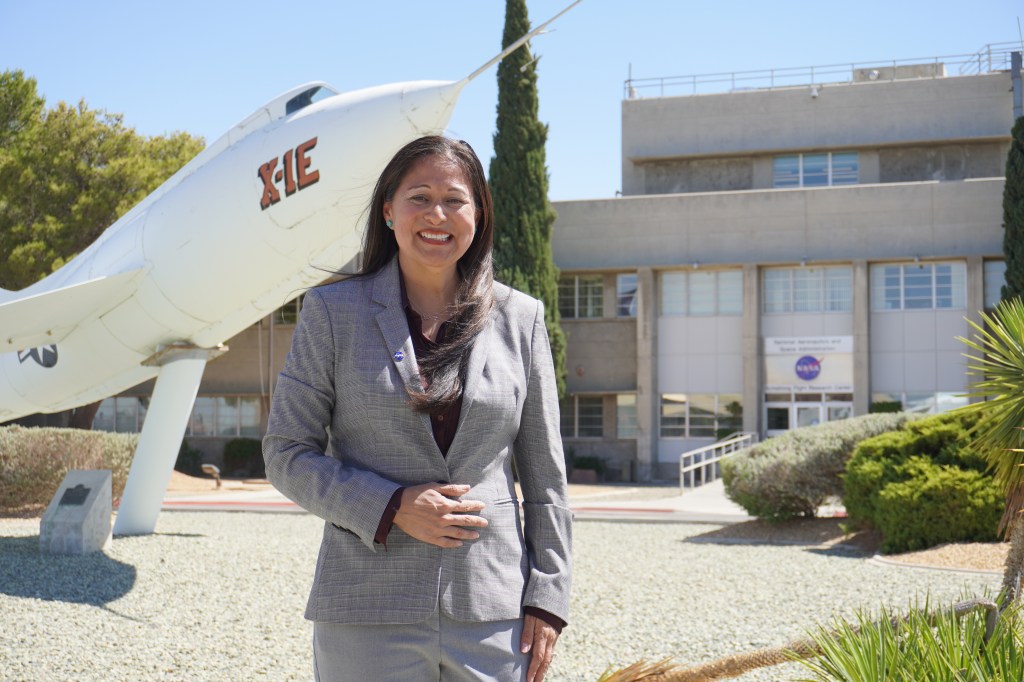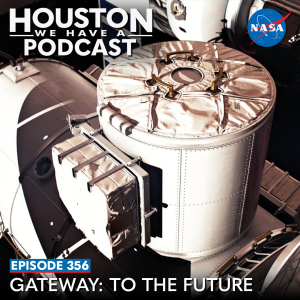
From Earth orbit to the Moon and Mars, explore the world of human spaceflight with NASA each week on the official podcast of the Johnson Space Center in Houston, Texas. Listen to in-depth conversations with the astronauts, scientists and engineers who make it possible.
On episode 356, United Arab Emirates astronaut Hazzaa Ali Almansoori and NASA lunar architecture lead Shatel Bhakta discuss Gateway’s unique airlock, as well as how the lunar outpost will prepare us for a journey to Mars. This episode was recorded on Sept. 11 and 27, 2024.

Transcript
Host (Gary Jordan): Houston, we have a podcast! Welcome to the official podcast of the NASA Johnson Space Center, Episode 356, “Gateway: To the Future.” I’m Gary Jordan. I will be one of your hosts today. On this podcast, we bring in the experts, scientists, engineers, and astronauts, all to let you know what’s going on in the world of human spaceflight and more. This is our fourth and final installment in our series diving into the Gateway lunar space station. But don’t worry, it won’t be the last time that we talk about it. On the series, you’ve heard about the science, the international modules, the robotic arm, the logistics, and more. For this episode, we’re exploring the unique airlock, as well as the long-term plans for the lunar outpost. Like the proceeding episodes in this series, we’ll split this into two parts.
First, you’ll hear from United Arab Emirates astronaut Hazzaa Ali Almansoori. Hazzaa was a military aviator before being selected among the first astronauts in the first batch of the UAE astronaut program. In 2019, he became the first Emirati in space after his launch to the International Space Station. Hazzaa is representing the Mohammad Bin Rashid Space Center, or MBRSC, of the United Arab Emirates, which will provide Gateway’s airlock. Later in this episode, you’ll hear from Houston We Have a Podcast host Kenna Pell, who speaks with Shatel Bhakta one of NASA’s lunar architects about the long-term plans for Gateway, and how the lunar space station prepares us for the journey to Mars. With that, here’s our final episode in our Gateway series in 2024. Enjoy.
[Music]
Host: Hazzaa Almansoori, thank you so much for coming on Houston We Have a Podcast.
Hazzaa Ali Almansoori: Thank you for having me.
Host: We were talking a little bit ahead of this, and you were telling me about listening to this podcast just even years before training and even listening to training episodes to understand how this is, it was such a pleasure to hear Hazzaa, so it’s great to have you on. It really is.
Hazzaa Ali Almansoori: Thank you. Thank you so much. Really, Houston We Have a Podcast, that’s one of my favorite podcast ever. I’m always keen to, like, when waiting for a new episode to come and to listen to new updates about space and human spaceflight.
Host: That means the world to me. It really does. And I’m so happy to have you on. We’re going to talk a little bit about you and growing up and your biography, but really part of this is we’re learning about Gateway today and the United Arab Emirates is contributing something significant to Gateway. So we’re going to learn a little bit about that. Let’s first focus on you. You grew up, is it inside or maybe slightly outside Abu Dhabi. Can you tell me about life growing up?
Hazzaa Ali Almansoori: I’m from United Arab Emirates. Obviously from Abu Dhabi. Abu Dhabi is the capital, and also it is more than like 50% of the whole country, geographically. So, I am on the south side of Abu Dhabi state. So we are on that side, we call it, it’s called Liwa City. So it is very desert area. It’s like oasis. I was fortunate to be born that side of the country. It’s very quiet, very surreal. And at night, you can see stars very, very bright. Sometimes you can see like the edge of Milky Way, if you’re lucky. And it is maybe one of the, my first memories of being attached to stars and like thinking more about, can I reach the stars? Can I be an astronaut in future? So that is how it started. And, obviously, coming from that side of the world and the region, it’s difficult to express that you want to be an astronaut. You think it is something that not achievable. You cannot say that as a kid. Back then. You want to be an astronaut. You can dream about it. Maybe you can watch Star Wars or cartoons and thinking that that’s maybe the limit of it.

Host: But still, I mean, you definitely had this passion, and I wonder if that was part of the reason that you went into aviation.
Hazzaa Ali Almansoori: Definitely. So, as I mentioned that growing on that side of the country, at night always we gathering with like our parents, with the neighbors on the campfire, talking about ancestors, how they use the star phone navigation. And that was the early memories of me looking at stars. And then one of the things that really impacted me the most is at fourth grade, we have this full like lesson about space, human spaceflights. And on that page, there was like pictures of Neil Armstrong and also other astronauts. The first Arab astronaut, Sultan ibn Salaman, who flown here from United States back then in ‘85. And also one thing, the other picture is picture of our founding father of the UAE Sheikh Zayed sitting with the Apollo crew members, Tom Stafford, and others also. And that was back in ‘74, ‘76, they were doing this tour around the world explaining about human spaceflight. And they came to Abu Dhabi, or UAE at that time in ‘70s. And UAE is fairly, very new country. We are just celebrating this year, 53rd anniversary of our establishing our country. So it was just at the beginning of establishing the country. So that picture in particular just inspired me the most, just seeing our leadership sitting with astronauts.
I met, actually, Tom Stafford like five years ago here. He was doing some record or something, videos. And then I saw him and he talked about that interview and that interaction with our leadership. So that picture actually is one of the things that inspired me to just pursue that dream in future. And this is why I became our pilot at that time. Because when I read about astronaut biography back then, most of them came from aviation. So I said, “Okay, maybe that’s the way to do it.” So to be honest, when I pursued the aviation and to be an Air Force, it was just the element of it. I thought that I’m going to be a pilot and I’m going to be a fighter pilot, and I’m going to enjoy that doing that. So that is maybe one of the early memories that I recall, like how I get attached to space and aviation.
Host: It’s beautiful. It is this moment, this picture, this imagery that shows collaboration, that shows countries together, and all of a sudden it, it seemed reachable. And, you know, looking at the biographies of other astronauts before, how did they get there? What I read though, Hazzaa, is you weren’t just a pilot. You were a very, very good pilot. In your biography of the MBRSC, they really bragged about you quite a bit. So you must have really studied and really worked hard to get to such high regard in the aviation community.
Hazzaa Ali Almansoori: I I loved my job. I mean, like, to be a pilot and just to fly F-16s back then, just, you know, the aspect of it. I mean, like, to be a pilot, you have to be really very sharp, can make a decision in very short time. And plus, you have to be disciplined and humble also because you are driving a very sophisticated, dangerous machine. Sometimes close to ground. Before I joined the space sector or like applied to be an astronaut, I was doing air show, solar pilots like display with the F-16. That was the peak of my career where I was doing Dubai Air Show, like with F-16, a very low-level altitude display, like 250, 200 feet, 500 knots. It was fun. Sometimes I reached 90s.
Host: Oh my gosh.
Hazzaa Ali Almansoori: Oh, it was really like one of my best moments. And just being on that machine at that time is… it’s a huge responsibility. So that thing gave me a more, I would say, some of the advantages and during the selection because it gave me this type of looking at things in different way, operational way, and dealing with the scenarios where you have to have very short, like, time to decide and to have leadership on that. So, I’m really fortunate to have that job. And now doing this here.
Host: It got you to a great place. Speaking of selection, let’s talk a little bit about that. Can you talk about that whole process when they started making announcements that they were actually accepting applications and then going through the process to eventually be selected?
Hazzaa Ali Almansoori: So, in December 2017, we started…our government started the announcement. So our vice president in his Twitter back then, he announced about that program. And without hesitation, I mean, like, he invited everyone, like boys and girls, all who’s capable of applying. If you have the resume, if you have the requirements, please apply. So I remember I applied alongside with 4,000 applicants. At that time, it was really tough just to see the applicants coming from different backgrounds. And it’s really interesting to see that amount of people, like in our country, just interested in being an astronaut. So we spent like an a year of, you know, examining and doing different type of interviews. And we flew to different countries and also, I remember astronaut from United States help us at that time for the selection cause it was the first time we do selection. So MBRSC, when they handled the selection and everything. So they came to NASA before the selection and they expressed that we want to open a certain program. So we learned from them. We got a lot of help. I remember Chris Cassidy, one of the people that they were there doing the interviews also. And it was really tough. I would say selection, they end up selecting myself and Sultan Alneyadi. Both of us had the privilege to represent our country in space. Sultan recently came last year from a six-month mission. And it was really something that we learned a lot from both missions.
And after my mission in 2019, we saw the importance of opening another selection. We selected Nora (AlMatrooshi) and Mohammed (AlMulla), both of them actually been here. They been part of class 23, and they did the whole, like, ASCAN training here at Johnson Space Center. So, my case and Sultan’s case is little bit different. So after the selection, we had this opportunity of short flight with the Russians, right. With the Soyuz. So we grabbed it. So we said, it’s important actually to make sure that we can have that chance. We can fly at least first mission, short one, and see the impact on the nation and on our human spaceflight program in general. From the beginning, the program was sustainable. We’re going to fly, not only one or twice, we’re going to fly more than that. And we end up here today, partnering with NASA in great way. We have four astronauts. So we will definitely fly again.
Host: I have no doubt about it. I actually, during that selection of the new class of astronauts, I had the pleasure of interviewing Mohammed AlMulla and Nora AlMatrooshi and wonderful, wonderful people. Just having them in the studio. We were laughing. They were very honest. They were just, you can tell they were doing a great job of representing their country and just, was really, really genuinely good people. But you and Sultan, out of 4,000 people, that’s quite an honor. Can you talk about when you were called and said, “Hey, Hazzaa, we want you to be of the first class of astronauts.”
Hazzaa Ali Almansoori: So it was a little bit was at that time, it was a little bit the front, back home. So they select both of us and then we flew to Star City to start the training without telling who’s going to be the prime and the backup. It was a little bit interesting.
But it was really, the objective is just to present the country regardless who’s going to be the first one. And at the middle of the training, it was April 12, 2018, or sorry, ‘19, they did the announcement. And April 12 is a very special date in Russian history. You get on flight.
Host: Couldn’t have come a better time. Perfect.
Hazzaa Ali Almansoori: So I was really thrilled with that and excited when they, they told me that you’re going to be the first one. It’s great privilege and great responsibility. You’re going to be the first one to represent the country. The kids, they’re going to look up to you. And they said they want to be like Hazzaa. So it was a huge responsibility. We focus at that time to just learn how to be a good crew member and how to just understand human spaceflight in general and how to be a good part of the team. I remember when we came at Star City at the beginning, we heard that there’s a cottages, there is NASA astronaut there. So we that we interact a little bit with the Chris Cassidy. He was there training. So we know that he was there. So we met him and we sit with them. To be honest with you, most of the time we are just at the cottages chatting with the NASA astronaut. So it was a great experience for us. And it’s amazing how astronauts from different countries gathering like in one place and talking about their backgrounds and their history and their dreams, and how they end up doing this. It’s amazing, really. And at the end of the day, we figure out that all of us have the same, like, you know, passion and we end up here because we committed. And sometimes we’ve been lucky, but still a commitment is the key of it.
Host: That’s right. Yeah. I remember a couple of times I’ve gone out to Kazakhstan for Soyuz return operations, which you did return on a Soyuz. And just like you, Soyuz sometimes represents many nations. And I got to hang out in the hotel with people of many nations, and it was that exact same feeling. You know, you think you’re coming from all different parts of the world. Really, we were covering the globe when it comes to being in this hotel together, but it was so easy to get along. We were all there for the same mission. It’s really cool. And that’s very unique about human spaceflight. Can you talk about your first mission just a little bit? You were the first one up there. I’m sure you had a lot of expectations going up there and how that sort of compared to the reality of the situation.
Hazzaa Ali Almansoori: So I was part of Soyuz MS-15.

Host: Okay.
Hazzaa Ali Almansoori: I remember I was with Jessica Meir and Oleg Skirpochka. So there were really great team. So that was the first flight for us, for me, and for Jessica actually, Oleg, that was his maybe third flight. So he was used to flight space. So, but for us, when we reached 200 kilometers after just booster stop, and we experienced for the first time weightlessness, we’re looking to each other, Jessica and I, just, we were so happy. It was like a kid entering like a candy shop. So it was amazing. Just the feeling of okay, we made it, we are here. And then my flight was short flight, so it was about eight days, seven days and 21 hours. So at that time, mine was fully packed with science to do experiments and to do outreach and to talk with the kids in our country and in the region. So from the beginning, I understand that the magnitude and the importance of that mission. So, actually, I had the chance to take pictures of my country in the second day. I was like, eager to do it in the first day, but I couldn’t. But it was amazing. I mean, like, it was eight days of experiments. I conduct a lot of experiments with NASA, with JAXA, with Roscosmos. And I think one of the best things that happened to me is to watch Earth from space. And they told me, “Did you have any homesick?” I told them, “I had air sick.”
[Laughs]
It felt like I’m missing the sun hitting my face. I’m missing Earth. Or like air is the breeze is just hitting my face or the dirt smell that all of these things seems to be not important now, but when you are up there, you feel the importance of that. And you appreciate what you have here on ground. We are always mentioning that as astronaut. And we got this overview effect of being on board the station floating and looking at Earth from 400 kilometers. And it was one of the best moments of my life, just being there, working with astronauts from different countries, and always I say, “Yes, we are talking different language, but our goal is one, is to represent the humanity and to present everyone onboard the station, we have one goal, and we are speaking one language: science.” And it is really important to take that, to bring it back here on ground and make sure that everyone understand the importance of human spaceflight. Not only from technological part, but also from human part.
Host: That’s right. That definition, how you define the importance of it. And then also that perspective is something that people really gravitate towards. And I think it’s especially true for you, Hazzaa, because being the first Emirati, they of course disclose to you, like you just said, that you have this great responsibility of being the first Emirati in space, coming back to the UAE. People are going to gravitate towards you upon your return to from space. Can you talk about the reception within your country? How people viewed you and taking on that responsibility of representing your country and sharing exactly what you just told me. That experience of being in space and the importance of human spaceflight.
Hazzaa Ali Almansoori: I remember when I was a kid, I saw, many astronauts when they came back from their flight back home, they were welcomed with the parade. And everyone is waiting for them outside. And the kids, that’s what happened to me. It was like Apollo era back home. I mean, the eyes of the kids, they changed. I mean, like, you can see they can go back to school, and they say, “Well, I want to be an astronaut. I can be an astronaut.” Cause it’s happened to me. Back before that, it was difficult to express that. And it was really something that impossible to dream about. But, after the flight, I mean, like our leadership, they’re welcoming us. And it was a great welcome with a lot of parade. And people are welcoming us and the kids. And my family, they were there also waiting for me. And we started the outreach. It is part of our job as astronaut to just to interact with the public and tell them what we saw, what we experienced in our flight. They want to hear about it. They want to know how it felt like to be in space floating, eating, sleeping. They have so many questions. So it was really, for me, so satisfying to explain to them, especially the kids, knowing one of them, maybe at least one of them, he will carry that with him or with her. And they will carry it for the rest of their life. And maybe they’ll impact their life in different ways.
Host: Beautiful. Absolutely beautiful. Hazzaa, I want to talk now about the MBRSC, Mohammad Bin Rashed Space Centre, and how we are working together, because a lot of this, a lot of what we describe this journey of yours in space and being the first Emirati is the beginning of a partnership that is long lasting. Part of the reason we’re talking today is talking about how we are working together for the Gateway. It’s very much a model like the International Space Station, right. That we were talking to. International Space Station is exactly that. Very international, it’s a collaborative effort from nations around the world. UAE is now with NASA for the Gateway around the Moon. This is a wonderful partnership. UAE signed the Artemis Accords in 2020, I believe, right? And so we’re going together. Can you talk about the relationship between our countries?
Hazzaa Ali Almansoori: Definitely. Our relationship, like in general, it’s go way back to the beginning of our establishment of our country. And in the space sector, when we start from the beginning, we reach out to NASA to help us with a lot of things. Cause they started this and they started a human spaceflight and space exploration at the beginning. So in terms of human spaceflight, as I mentioned before, we ask for help in terms of selection. Also both my selection also on Nora and Mohammed’s selection. And we saw that it is really important to continue our training gear at NASA. So we started the training Sultan Alneyadi back in 2020, during COVID. It was really very different back then. It was challenging, but we made it. And the support and the welcoming that we had from CB, astronaut corps, and astronaut office here, it was great for us, for our families back then. And also during, so Nora and Mohammed mission also on training. When we are looking at NASA and MBRSC, we think that it is really important. We work with the international entities. And when it comes to NASA, we are really having this, I would say, good way of dealing with each other in terms of human spaceflight. In terms of space sector in general, the offer that we got with the Gateway, I remember that it is NASA now, they’re starting the Artemis missions. And then from there starting Gateway program. We show the interest from the beginning that we want to be our partners. And I think NASA saw on us in high potential partners because of the commitment we show in terms of human spaceflight. We need to learn and we are committed in being partners.
So after Artemis Accords, we went in a very long negotiations. And then we end up handling the airlock for Gateway, which is a very important piece of any space, I would say of any spaceflight, or space station in general. Our agency or our center, Mohammed Bin Rashid Space Centre, back then, they think that it’s really important to be a partner because partnership is totally different than being just a part of like, just one mission. And that’s it. Now we are doing a full integration between different teams, engineers, scientists, back home, and also knowledge transfer. So we’re going to be part of all of that. And the knowledge and the way that we are going to do it, we’re going to go do it together. We’re going to fly together with NASA. So that’s really important. And also with other partners. And it’s really important in my perspective, is to understand all of that as a nation, cause it’s going to help us in future to go together from Moon to Mars.

Host: That’s right. Yeah. And that’s part of the whole goal here is it’s not just Gateway around the Moon. It is very much a journey of Moon to Mars. All of this leads to exploring further into the solar system. I wonder though, Hazzaa, why an airlock of all the things you could have contributed, why did UAE say, “You know what, we’re going to do an airlock?”
Hazzaa Ali Almansoori: I think it is, at that time it was when we approached NASA, one of the things that it was available at that time was airlock, because it was already divided between the partners who’s going to taking care of what. And then we saw the airlock, it’s one of the options that we are capable of handling. For our engineers, it’s going to be the first time to interact with a module or a satellite that is not, it’s involving humans as part of their engineering. So it was a very challenging part for us and engineering level. But, we say, what, let’s do it, we’re going to learn together and we’re going to understand how we can conduct this type of engineering part cause it is very important.
I saw that on onboard the station, we saw that during Sultan’s mission also. He conducted the first Arab spacewalk ever happened. He spent six months onboard the station. And that is really impactful in all aspects. And without airlock, you cannot go outside the station. You cannot go outside the Gateway and fix things or deploy any type of equipment or add a new equipment outside the station or Gateway in the future. And so it’s really important to have that. And the deal that we had from NASA back then when we started this, that we’re going to build the airlock, it’s going to be also science airlock in addition of just not only supporting space EVAs or human spacewalk.
Host: That’s right. And that’s a very important element too. There’s the maintenance aspect. There’s of course that, which is what we see a lot on the International Space Station, especially recently. Of course, there’s science payloads as well, but this is called the crew and science airlock, it’s very much that it’s built into the name. This is part of the whole objective of Gateway is that access to the Moon and the continuation of science and exploration is wonderful. Just quick overview of features. I know there’s probably a lot of engineering to do, but I’m quite familiar with the International Space Station’s airlock and how that has the equipment airlock and the crew lock and how that sort of works. But when it comes to an airlock around the Moon, what can we expect to see in terms of the crew and science airlock’s design?
Hazzaa Ali Almansoori: So the design is definitely going to be bigger.
Host: Bigger, nice.
[Laughs]
Hazzaa Ali Almansoori: So that is one of the things that we emphasize on from them. Like when I talked with our administration, they’re back home. Like, we need to make it bigger for training and to be easier to work on board the Gateway also. And definitely going to be two parts. So we learn from the station, space station, is that it is going to be the same concept, going to be part of like equipment airlock and the crew lock with the same concept we can in future utilize either for crew depressurization to go outside the station in case of anything happened. And the other requirement is the science part of it. So, science airlock. So, there’s still discussion about how we’re going to conduct that, but definitely we will have that capability of providing the, they call the science table maybe. And we’re still talking about the approach of that, so we can utilize it, so we can deploy different equipment to outside the Gateway. I would say that the final design is not fully mature now, but as I mentioned, it’s going to support the EVA, it’s going to support the science deployment and also docking capability of different vehicles approaching the Gateway in future.
Host: Certainly an engineering challenge, and I’m very much looking forward to seeing more of it. So what’s also nice about this and this and NASA working with the United Arab Emirates and we may see future Emirati astronauts around the Moon. And I know that’s a part of this, right? We very much may see a UAE astronaut at the Gateway as part of the as part of this collaboration.
Hazzaa Ali Almansoori: So when we did this agreement, so part of that agreement that we’re going to, we’re going to send one of our astronauts great to deploy probably the airlock and to work with the airlock at the beginning. So when we started the program at the beginning, we didn’t have the six-month mission, to be honest with you for Sultan. So we just started my mission. We came here, and then we have this opportunity of this six-month mission. We also have it, and it’s just building up block and NASA, they saw that commitment from the beginning. So I’m saying that because yes, we have now one mission to airlock, to Gateway, but I believe in future we will have so many missions, I mean to land on the Moon, and also to have another mission to the International Space Station.
So, it’s a sustainable program for us. So definitely we’ll have one astronaut flying to Gateway to deploy the airlock and to work with it. And just only the beginning of a new chapter for us. So I’m always thinking about seeing that view of Earth rising, you know, the same one that Apollo 8 described. So you never know, it’s one of us that will represent the country, the whole, like, I would say, humanity onboard the Gateway and also landing on the Moon.
Host: Exactly. And that’s where I wanted to end this conversation, was that perspective of yours, with this idea of deep space exploration, what we’re talking about here is contributing different modules to a space station around the Moon and having a continuous, or a continual sustained presence on and around the Moon. This is, you know, and like you said, it’s really just the beginning, just putting these elements on Gateway is just the beginning. It’s an expanding program that continues to have more and more astronauts from different countries walk on the Moon and expand our presence so that we can get to Mars. It’s a wonderful endeavor. And I wanted to get your perspective on your passion for deep space exploration. Thinking about, you’re a kid in Abu Dhabi looking up at the stars, and now you’re a part of this grand adventure. Can you talk about what you’re looking forward to?
Hazzaa Ali Almansoori: I’m looking forward just to see more nations from new countries joining this endeavor. It is challenging, but it’s doable. And I think this is a very interesting time to live on. I mean, like, to human spaceflight and space sector in general is approaching a new era, I would say it’s already reliving that. I mean, like private sector, Polaris Dawn just launched yesterday. And I mean, like, it’s so interesting to see this different type of things happening in a very short time. And it’s very interesting. I’m blessed to be part of this time of my life. I mean, like being here, working with NASA astronaut, walking at NASA, is something that I dreamed about. You know, just, you know, back home, meatball logos is everywhere. Nothing. I mean, it’s like the prestigious thing that you will see in your life. I mean, like, just in space, sector. So, we learned a lot. We understand how we can be part of this back in UAE, we are committed to also be part of a bigger picture. And I think more nations are going to join this endeavor together.
Host: I hope so. Hazzaa Almansoori, it was such a pleasure to have you on Houston We Have a Podcast today, learn about you and working together with countries to make this Gateway possible. Fantastic. Thank you. Thank you so much for coming on.
Hazzaa Ali Almansoori: Thank you, Gary.
Host (Kenna Pell): At this point, we’ve heard from four astronauts, from four different space agencies. We’ve heard how important Gateway is to the science of Artemis. We’ve heard about robotics and logistics, spacecraft and Gateway’s airlock. Now we’re going to talk about the future of Gateway, specifically where Mars comes in. To tell us more about Gateway’s future. We have the Lunar Architecture Team Lead Shatel Bhakta. Shatel, Thank you so much for being here today, and welcome to Houston We Have a Podcast.
Shatel Bhakta: Thank you. I’m glad to be here.
Host: So your title is Lunar Architecture Team Lead. That is a really cool title. What all does your role entail?

Shatel Bhakta: What does it not entail? I have an opportunity to lead the team that’s responsible for initiating the concepts that’ll mature into future elements that helps NASA meet our Moon to Mars objectives. My team looks for evaluates gaps in the current systems and capabilities. We then take that and look for novel solutions and concepts, analyze the trade space around those concepts, and propose integrated solutions to agency leadership on how we should move forward on a range of items and areas. These range from mobility, logistics, power, and habitation, just to name a few.
Host: I love that. Of what does it not entail, right? So, take us back to the beginning and where did your interest in space come from, or how did you get to NASA and what have you worked on prior to your current role now?
Shatel Bhakta: Well, I’ve always had an interest in aeronautics and space. I used to look up at the night sky and be amazed at the vastness that was around us, like a lot of young boys, I enjoyed science fiction of my generation, starting with comic books to, you know, shows and series about transforming robots and stories about sprawling space federations that explore and heroes fighting dark empires. I always knew I wanted to work in aerospace to some degree. And I was fortunate enough to actually start work in human spaceflight my whole career. So, over 20 years now. I studied mechanical engineering at UT Austin, so hook ‘em, horns. And while I went to school, I was privileged to co-op at NASA with Lockheed Martin Space Ops in biomechanics and design work.
After I graduated with my degree, I started with Boeing, working on International Space Station, working on active thermal analysis, working on hardware as well as mission operations. So in mission operations, we were like the engineers in Apollo 13, where they drop the parts on the table and say, make the square filter fit into the round hole. So I did that for eight years. And while I was doing that work testing, doing hardware development and mission ops, I somehow managed to squeeze in earning a master’s in space architecture from the University of Houston. Shortly after I got that, I moved over to Lockheed Martin Space to go work Orion and work more active thermal, but also life support systems. So, you know, the systems able to keep the astronauts alive in the harshness of space. I worked that from early requirements to conceptual hardware and prototyping components and assemblies and all the way to flight.
I led the active thermal team for Orion EFT-1 and then as soon as we successfully splashed down that mission, I was asked to lead life support team for Artemis II and beyond for Lockheed Martin. I led that team for about five years, maturing our requirements, our conops, our integration with other subsystems, testing and all the risk reduction work with suppliers as well as with NASA. And then during COVID in 2020, had the opportunity to actually interview and get a civil servant position with NASA. And that’s where I joined Gateway as a thermal systems manager and led that team for about one-and-a-half years through their first preliminary design review. At around that time, that’s when I found a role on lunar surface. After spending most of my career, you know, in LEO and looking at a new spacecraft like Orion, and then orbiting around the Moon with Gateway, I saw this position for leading lunar architecture and I was able to be doing that for the last two years.
Host: Now, so much cool experience. And how did all that prepare you for your current role supporting the return to the Moon?
Shatel Bhakta: Well, I think each role along my journey helped broaden my view, primarily in technical integration and the scope required to achieve the inspiring thing that NASA does. I don’t think we have an appreciation, you know, everyone talks about rocket scientists and how intelligent the folks at NASA are, but in different roles, different ways, there’s as much technical work as there is people work and consensus building. In my current role, you have to be able to not only see things that are right in front of us, things that are very far out, but things that may never materialize and still develop a feasible path forward that the agency can buy into. My work with mission operations and hardware engineering taught me the importance of documenting decisions and the data that goes into them so that others can follow the logic when I won’t be there. And then my time doing my master’s degree and leading Orion ECLS helped me see large scale integration, working with people who have different backgrounds and different aptitudes, as well as integrating a spacecraft and working through its entire life cycle from, you know, dreaming it up when it’s just a sketch on a piece of paper, working through the requirements phase and trying to figure out what should it really do. And then when you build it and test it and say, what can it really do. In my current role, I think I can take all of that history, and working in human space, like knowing what it’s like to sit operations, knowing what it’s like to actually build the hardware and then, take that and say, “Wow, the best solution that’s out there. It maybe wasn’t the one that I initially thought it was.”
Host: I love that and seeing what it can really do. So, zooming out a bit, we often talk about how Artemis and lunar exploration are laying the foundation for humanity’s journey to Mars. That’s the big picture. And of course, Mars is the end goal, but how exactly is Artemis going to pave the way to Mars?
Shatel Bhakta: Well, so for Artemis paving the way to Mars, we have to start back with NASA’s Moon to Mars objectives. They really define what we want to achieve in going back to the Moon and venturing onto Mars and potentially beyond. From there, we want to start with building on that Moon to Mars architecture. We have this roadmap for exploration, and how do we go and achieve those objectives? We’ve got a decision-making process that helps us identify the most viable paths to achieve them. So imagine you’re Doctor Strange, and you’re trying to figure out all the infinite possibilities that are ahead of us, but how do you choose the combination of things that you need to do today in order to enable the most possible outcomes? Currently the architecture is currently comprised of four segments at growing complexity. As we’re able to achieve more and more of these objectives, it enables our crewed and robotic exploration of deep space.
And so when we talk about deep space, that’s, you know, the lunar space, as well as anything beyond that heading to Mars in our human to Mars segment, that’s the furthest that we’re looking forward right now. That’s not the end state, but that’s the furthest we’re looking. Currently we call those trade spaces that we mentioned, those trade spaces are wide open. That means it’s pretty blue sky in what the architecture could look like. There’s obviously a lot of players out there that were having advanced technology, but in reality, we’ve never done anything like that before, sending large scale human systems to a whole other planet. And so, as part of this architecture definition, we’re developing a roadmap of what decisions need to happen and that the agency should make as it develops our first crew missions to the Red Planet. They’re prioritized based on the flow down of those impacts and what it can do for the architecture. And we’re trying to look, as we call it, looking from the right back to the left. So in the future to the right, looking back to the systems we’re building today, and we want to make sure that those two views line up with each other.

Host: You know, right before we started the conversation, checking mics and stuff, I was telling you how I just learned about the SAO office. What does it stand for?
Shatel Bhakta: A Strategy and Architecture Office.
Host: And it’s just crazy to think that these jobs exist, right? You’re coming up with these different spaces and different, you know, roadmaps. As you know, we move into Moon and Mars exploration. This is so cool. And speaking of trade space, how does that relate to Gateway, as Gateway part of the trade space?
Shatel Bhakta: Oh, most definitely. Gateway has incredible value to the lunar architecture. But we’re also looking at how it can feed forward to our Mars exploration. Gateway offers us great opportunity for technology and research. We can learn lessons for building and performing experiments at the Gateway that can have profound impacts on the future of exploration, regardless of where we end up going. Think about all that we’ve learned from the International Space Station as a low Earth orbit laboratory. Gateway will be an extension of that and continue that legacy of science and discovery. It also will help us learn about how the human body can adapt to life and space beyond LEO. We want to apply those lessons to future Mars missions. We’re going to learn how to support humans that are living in deep space for long periods of time.
You know, we currently have that experience with ISS, but one of the unique things about using Gateway and the Moon is we can do what’s called gravity transitions. And it allows us to see how the astronauts would react to being at Gateway for long periods of time and microgravity then going to a reduced gravity environment at the lunar surface, which would mimic the Martian surface, do some operations, see how their body adjusts, and then come back up to the microgravity environment that would then mimic their transit back to Earth. So those reactions, those changes in their body and what that would cause will help us understand the physiological effects. Now, along with that, we can mimic some of the different challenges that we’ll face when it comes to communications delay, as well as crew autonomy when it comes to operations.
Right now, we have mission control. ISS is orbiting above us. Communication delays are pretty insignificant overall. As we move to the Moon, those can turn into the order of seconds, but we can mimic that during training sessions and see what it would take and how those impacts would be if that turned into minutes or tens of minutes, as would be on Mars. Secondly, Gateway is its own destination. We haven’t made many decisions about how that trade space for Mars and how Gateway can be a part of it, but it can include a lot of different things. Gateway could be used to stage our Mars missions. It could also be used to be a hub to aggregate things, and we could also use it as a transportation piece and assemble a lot of the parts there and then move, head out to Mars from the Gateway space and or use it as a means for communications and other things.
Host: So Gateway can develop capabilities and maybe even stage Mars missions. Can you tell us more about that? What does that entail?

Shatel Bhakta: Yeah, so like we talked about, it can help us simulate Mars mission closer to Earth, right? The risks are lower, the crews closer to home. It’s only a potential three-day return at the shortest. And so we can simulate a lot of those Mars missions. We can also learn from the systems themselves. We can deploy them in an environment that’s similar to the Martian environment without having to send them all the way to Mars to test them. We do a lot of testing on the ground, but you don’t get those combined effects without actually putting systems into those areas. So that paves the way for us to have that staging ground where we can put multiple pieces of the architecture together and make sure that we understand how they interact, what those complexities are of those mission operations, and how we can leverage those capabilities as we explore future Mars capabilities. And then the way the architecture segments are currently set up, I’m going to be able to build on that. So even though our current end-state is looking at Mars, we want to build up from that with the systems that we’re building today for the Moon. And so as we build rovers and habitats and landers, we want to try to make sure that a lot of that can be evolved into use for Mars. So we’re trying to tie those decisions together and make sure that our investments are made for longevity.
Host: This is all amazingly fascinating, and it sounds super complex too. But what it comes down to is Gateway’s going to play this really important role of testing the technologies and capabilities we’ll need for future Mars missions, but obviously it is more complicated than that. Let’s really dig in. So can you tell us what exactly a Mars mission would look like?
Shatel Bhakta: Well, my Martian friends would kill me. So I won’t tell you exactly what one looks like, but our teams are hard at work figuring that out right now. As I mentioned earlier, the trade space is pretty wide open for the Mars missions. So the architecture right now has pretty open, I’ll say a blank slate to start writing from so they can draw up different mission concepts, different scenarios, and evaluate multiple options to look for what would be the best trade space for us to start trying to materialize. So the journey to Mars is pretty long. A round trip could be over 2 billion kilometers, which is more than a thousand times the round trip distance to the Moon and back. Astronauts will have a lot. We need to have a lot of things to make sure they’re safe, comfortable, and healthy, including a breathable atmosphere, clean water for that duration, comfortable sleeping quarters, both physically and psychologically, exercise equipment, computer workstations, foods that can survive and still be nutrient rich for them, as well as tools to fix things in case something breaks and protection for radiation and meteorites and other dangers, in as they traversed through deep space and on the Martian surface.
Earlier we had talked about how Gateway was going to help us learn about our bodies adapt to life in deep space through those different gravitational conditions. And so, as I mentioned, those changes in the gravity wells would have an impact on our crew and their bodies. So we want to see what that does to them physiologically make sure that they can recover without the aid that we see here on Earth. When astronauts return from extended stays on ISS, you see that they need help coming out of the capsule for a couple of days, they may be disoriented. We have to factor that in as we look to send crew to Mars, where, you know, that distance could be months, if not longer to get them to the surface of Mars and do their exploration.
So as we learn more, our architecture will iterate. It’ll evolve and we’ll start refinements. And if you’re curious to learn more, you can check out our website nasa.gov/architecture. We’ve published a lot of white papers that are open to the public on these, and you can take a look and even potentially ask us questions on them.

Host: It’s exciting to think about humanity’s future on Mars, and I know you’re thinking about that every day. But that’s where all this is leading, and it’s amazing that NASA’s already thinking about the decisions we need to make all of that possible. So I really want to know, what are you most excited about when it comes to deep space exploration? And what about humans? One day stepping foot on Mars is so exciting for you.
Shatel Bhakta: I have to say, just the inspiration and the imagery that it evokes, right? I wasn’t alive when men walked on the Moon, but I am excited to not only be alive when humans will return again, but also be a key part of the complex and amazing journey that’s ahead of us. I look forward to seeing the first images of humans exploring the surface of Mars and helping make the dreams of many a reality.
Host: I think that’s a great place to leave it. Shatel, thank you so much.
[Music]
Host: Thanks for sticking around. I hope you learned something new today. Check out nasa.gov/gateway for the latest on the lunar space station. And our full collection of episodes is on nasa.gov/podcasts. You can also find the many other wonderful podcasts we have across the agency there as well. On social media, we’re on the NASA Johnson Space Center pages of Facebook, X, and Instagram. Use #AskNASA on your favorite platform to submit your idea or ask a question, just make sure to mention it’s for Houston We Have a Podcast.
The conversations with Hazzaa and Shatel were recorded on September 11 and 27, 2024, respectively. Thanks to Will Flato, Dane Turner, Abby Graf, Jaden Jennings, Dylan Connell, and Gary Jordan. And of course, thanks again to Hazzaa and Shatel for taking the time to come on the show. Give us a rating and feedback on whatever platform you’re listening to us on and tell us what you think of the podcast. We’ll be back next week.
This is an Official NASA Podcast.

